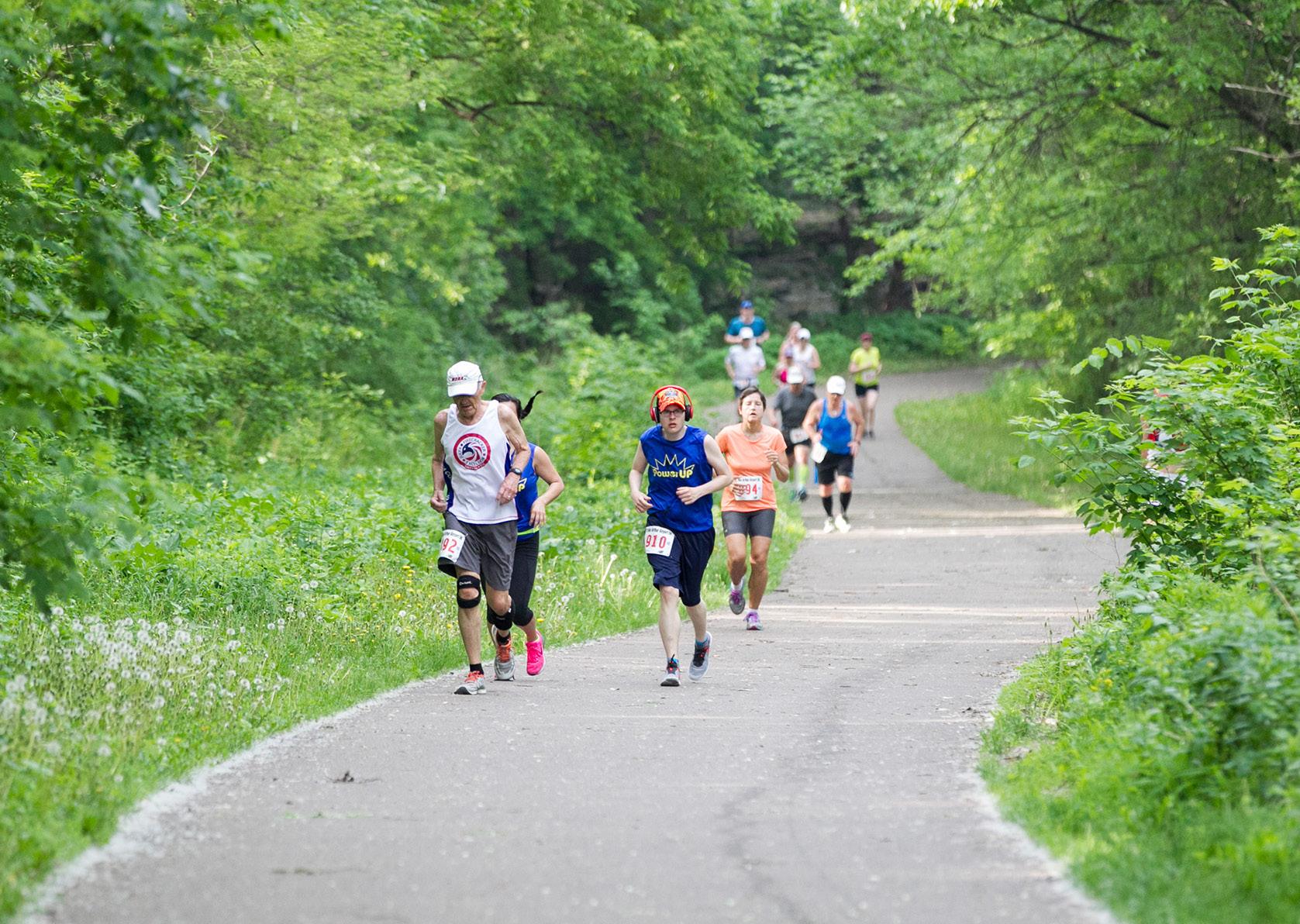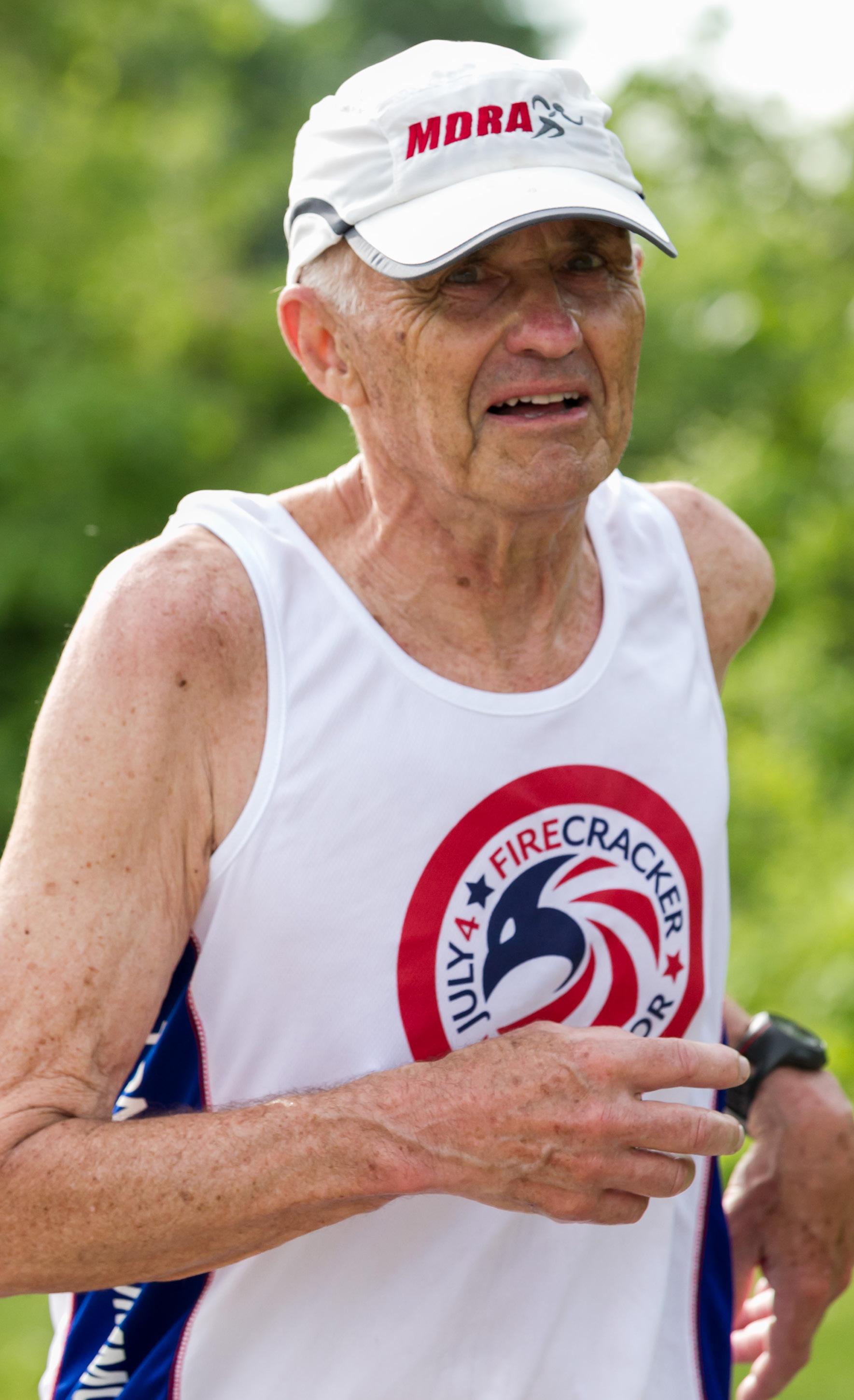
9 minute read
FINISHING LAST, PART II
Following up with Philip Erickson
BY PHILIP ERICKSON
Advertisement
For the spring 2019 issue of RunMinnesota, I wrote an article entitled “Finishing Last”. It was about the Ron Daws 25K that I ran in 2014. This article continues that same theme, only with different races. There were three of them in 2019 that met the standard I set in the 2014 Ron Daws. The races and times were:
Securian Half Marathon: 3:07 (finish: next to last) MDRA 15K: 2:22 (finish: last)
Twin Cities Marathon 6:25 clock removed at 6:20 (but surprisingly did not finish dead last with a 6:25 showing on my Garmin)
Securian Half Marathon
I have a regular routine the morning of a race. One is to check the weather on KSTP with Jonathan Yuhas. For reasons I don’t recall, I failed to check with Yuhas the morning of the Securian. It was a bad mistake. Here’s why. I had chosen my adidas Aerobounce to run in. They are good shoes for running on dry pavement, but really bad on ice or snow. If you were to put your hand on the bottom of the Aerobounce and drag it the length, you would find narrow indentations, but not the kind of indentations that grab onto snow.
When I was on the Green Line to get to the Securian, I looked out the window and saw flakes of snow. The last forecast I saw (the night before) said nothing about snow, but Yuhas probably had! Fast forwarding: it snowed the entire race, about two inches worth. If I knew that was going to happen, I would have worn my Hoka Challengers, which are great on trails and snow. Unfortunately, I was still wearing my summertime adidas. This meant for every step forward there was a small slippage back. This slippage continued for 13.1 miles.
Even the start of the race was bad. There are two significant hills in the first mile. Going uphill was not the problem. It was going downhill in the snow that made me nervous.
I have to digress here and say that I am 79 years old. The fear of falling had never entered my head, even in my early 70’s. Now, in the winter, at the age of 79, my main running thought is: don’t fall! The good news is I didn’t fall in the Securian. I think mainly because I was going so slow.
Back to the race. I started at the back of the pack. I passed a number of people before we hit Shepard Road and very few passed me. (That was probably because I started at the back). It went fine for the first half. The great thing about ‘out and back’ races is that at the ‘turn point’ you can see how many runners are behind you, and there were many in that category. Here’s another running fact: When people pass you one or two at a time, you don’t pay attention to them; nor do you count them. It turned out that, after the turn, everyone I saw in back of me eventually passed me. I didn’t keep track of this as it was happening, and never turned around to look until a police car came alongside of me.
I had never been stopped by a police car in a race before, but I wasn’t nervous about it because I was pretty sure why the window was down, and he was smiling at me. I did as he ‘requested’ and went off of Shepard Road onto the sidewalk (which was not shoveled) so that Shepard Road could be opened for traffic.
Here’s another fact about winter and running races: volunteers at some point leave their post. I’ve never volunteered, but I know I would never begrudge someone who looked down the road, saw no one running and decided the race was over. In my case (and in the case of one other person; my ‘accomplice’) the absence of a volunteer meant we weren’t certain which exit to take to get off of Shepard Road. We took the first one. It may not have been the exit other runners took, but it got us to the finish line. I beat my accomplice by a few hundred feet, so I didn’t finish last.

MDRA 15K
At mile two I felt like quitting. In my 36 years of running races I have only quit twice – both times because of injuries. (All right! – three times, but only if you include the marathon where my ‘evil twin’ quit because he got cold). But this was different. I had no energy. I suppose a lot of runners have had that feeling. I know I’ve had it before, but for me that feeling often passes during a run. I hoped it would this
time, too, but it didn’t. I had no energy at miles four, six or eight. Walking helped, so I walked. Before I walked, though, I saw I was gaining on a woman. It always helps to see you are gaining on someone. A bit of an energy burst had me passing her. It didn’t last. She gave me a few encouraging words as she sailed by me approaching mile seven.
I finally got some energy back on the huge downhill going into Crosby Lake. I even had some energy on the flat portion near the finish line. Jack Moran hadn’t even taken the clock down yet (what a patient man he must be). When I neared the finish line, I got a huge standing ovation. Well, sort of huge. A dozen or so people were standing while drinking water, but they must have been amazed that someone thought I might even be able to beat that number. Oh, how wrong I was!
I’ve run a lot of marathons and there are three rules I run by: Rule One, at mile seven you should feel almost as good as you did at mile one, Rule Two, at mile 12 you should feel the fatigue, but have no thoughts about not finishing and Rule Three, at mile 19 you can walk it in.
I began walking it in at Mile 17, not 19; I wasn’t tired, but I had no ‘legs’. I began the run-walk method. My time started dropping drastically. When I was passing mile 21, a car came up behind me. The woman in the passenger seat said that I had to pick up the pace or I would have to get off of Summit Avenue and either: go to the sidewalk or get on the bus that was following all the runners. I chose the When you’re 78 years old, staggering and are serpentining down a steep hill, people pay attention - and they cheer! I know they were cheering for me because the nearest runner in front of me was closing in on the finish line and a quick turn of the head showed the nearest runner in back of me was about a football field away. I think their cheering (“You can do it! You can do it!”) was their way of helping me stay upright.
In 2019, the finish line was very different. The difference was that no one was waiting for runners. Oh, there were a few, maybe 10 in total. Four of them were Adam’s wife and two children. When we got to the finish line, the clock had been taken down, the shirts and medals stored away and the after race food
was still on the course, so they cheered me on to the finish. To give you an idea why they were so surprised to see me, the next to last finisher’s time (the woman who passed me) was 2:11. That’s a full 12 minutes better than my 2:23! No wonder they cheered. I didn’t have high hopes for this one for a good reason: I hadn’t gotten in the miles. Two things happened to me. I was hit by a bicycle while running in the spring and broke a rib, and in August I had eye surgery which precluded me from running for two weeks. In all I lost six weeks of running. There is no way I would have signed up for the TCM if the above two events hadn’t happened yet. But, because I wanted to save money, I signed up in May. Because of the above two occurrences I had my doubts, but I also had my ‘outs’. I live near Mile 15 (Ford Bridge) and close enough to Mile 20 (the start of Summit) to quit the race and walk home. And, since the marathon money was already gone, I thought I’d give it a shot.
I was still optimistic at the halfway mark. Doing the math that I believe all runners do, I multiplied my time of 2:37 by two and came up with a finish time of a little over five hours. I had finished in 5:17 the previous year and sidewalk, but I couldn’t run any more. It was all walk-walk now.
After I started the walk-walk, a faster walker came up behind me and asked if he could join me. His name was Adam, and since I wasn’t running any more, I was happy to have someone to talk to.
I have to digress again and say how much I enjoyed my 50 minute talk with Adam (it takes a long time to walk three miles). Can you imagine taking a normal ‘exercise kind of walk’ alone, and someone comes up behind you and asks if he can join you? What’s your response going to be? I’ll bet it wouldn’t be mine which was: ‘I’d be happy if you’d join me!’
We talked about running, about family, about what we did for a living, about school, about travel and lastly about how the finish line would look if we ever got that far.
We eventually did get that far. I remember the finish line when I ran a 5:17 in 2018. That year I had lost my legs at about mile 24. When you lose your legs, and the ability to run a straight line, you stagger. When you stagger on the downhill to the Capitol, you become worried about falling. One way to keep from falling is to serpentine down the hill, so I serpentined. boxed up. There was a nice lady who told us what we had to do to get our tshirt and medal, but our time would never be recorded. The clock had been turned off about five minutes before we got there. They don’t keep the clock running for only six hours. They keep it for six hours plus the extra time the last runner needs to cross the start line. In this case, it was about 20 minutes.
There is a sad feeling about not having your time recorded in a marathon. It makes you a non-starter, a non-finisher, a non-marathoner (except for the shirt which has to be picked up at TCM’s office). My watch said 6:25. That’s the only place my time will be ever recorded – on my wrist. It’s not that I disagree with that decision on the clock. ‘Six hours’ is a great incentive to pick up the pace, to make you a finisher, to see your name in lights (a dim light, but still visible). It is disheartening, though, when someone says to you: “I looked up the marathon results; your name wasn’t in there. How come?”







